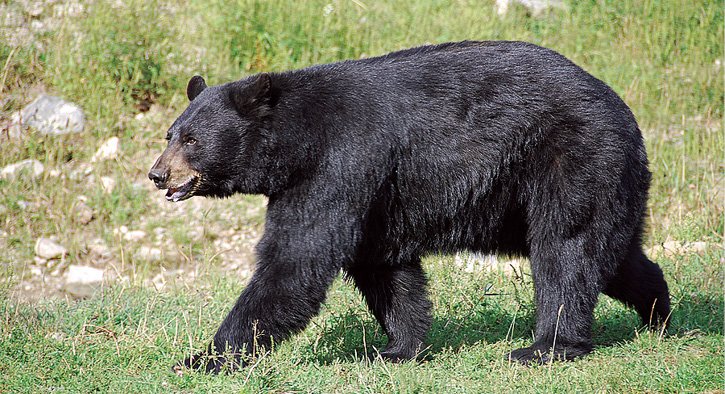With bears emerging from hibernation in the coming weeks, the Minnesota DNR reminds homeowners to check their property for food sources that could attract bears.
“To avoid season-long problems, take the time now to remove or secure anything that could attract a bear,” said Eric Nelson, wildlife damage program supervisor for the DNR. “Prevention is key. Once a bear finds a food source, it will likely return.”
As bears emerge from hibernation, their metabolism gradually ramps up and they will begin looking for food at a time when berries and green vegetation are scarce. Home and cabin owners should remove or secure attractants such as birdseed, garbage, livestock feed, or compost to reduce potential conflict.
Black bears are the only bear species that live in the wild in Minnesota. Bears are more common in the forested region of northern Minnesota, but can live anywhere in the state if they find an area of suitable habitat. They usually are shy and flee when encountered. Never approach or try to pet a bear. Injury to people is rare, but bears are potentially dangerous because of their size, strength and speed.
AVOID BEAR CONFLICTS BY FOLLOWING THESE TIPS:
AROUND THE YARD
- Any time you feed birds, you risk attracting bears. Avoid feeding birds from April 1 to Nov. 15.
- If you still wish to feed birds, hang birdfeeders 10 feet up and 4 feet out from the nearest trees. Use a rope and pulley system to refill birdfeeders and clean up spilled seeds.
- Do not put out feed for wildlife (like corn, oats, pellets or molasses blocks).
- Replace hummingbird feeders with hanging flower baskets, which are also attractive to hummingbirds.
- Do not leave food from barbeques and picnics outdoors, especially overnight. Standard coolers are not bear-proof.
- Clean and store barbeque grills after each use. Store them in a secure shed or garage away from windows and doors.
- Elevate bee hives on bear-proof platforms or erect properly designed electric fences.
- Pick any fruit left on trees from last fall and collect any fallen fruit promptly.
- Cover all compost material added during the winter by turning the piles or covering with leaves, shavings, manure or other compostable material. If you compost household food scraps, consider securing it with an electric fence.
- Harvest garden produce as it matures. Locate gardens away from forests and shrubs that bears may use for cover.
- Use native plants in landscaping whenever possible.
- Store pet food inside and feed pets inside. If pets must be fed outdoors, feed them only as much as they will eat.
GARBAGE
- Store garbage in bear-resistant garbage cans or dumpsters. Standard rubber or plastic garbage cans are not bear-proof.
- Keep garbage inside a secure building until the morning of pickup.
- Properly rinse all recyclable containers with hot water to remove all remaining product.
- Store recyclable containers, such as pop cans, inside.
MORE BEAR INFORMATION
People should be cautious around bears and give them space. If bear problems persist after cleaning up food sources, contact a DNR area wildlife office for advice. For the name of the local wildlife manager, contact the DNR Information Center at (651) 296-6157 or (888) 646-6367, or find wildlife area office contact information on the DNR website.






